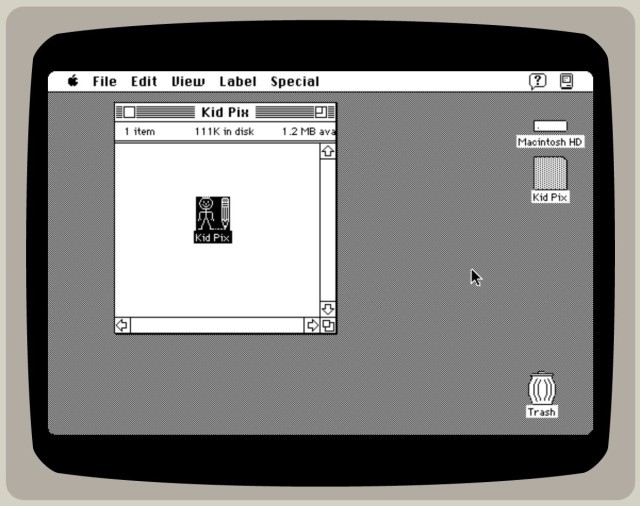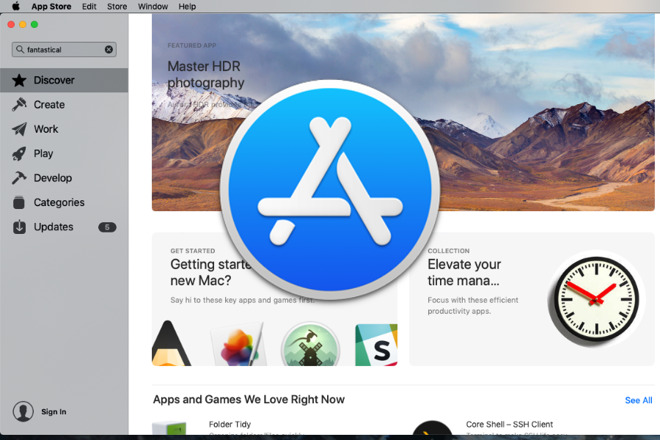Apple Made Apps For Mac
Posted : admin On 14.02.2020Get a huge head start on creating a native Mac app based on your existing iPad app. Your Mac and iPad apps share the same project and source code, so any changes you make translate to both platforms. And your newly created Mac app runs natively, utilizing the same frameworks, resources, and even runtime environment as apps built just for Mac. Mac App Store is the simplest way to find and download apps for your Mac. To download apps from the Mac App Store, you need a Mac with OS X 10.6.6 or later. 35 rows To open apps, click their icons in the Dock or click the Launchpad icon in the Dock, then use. You must be at least 18 years old to be eligible to trade in for credit or for an Apple Store Gift Card. Not all devices are eligible for credit. More details are available from Apple’s Mac trade‑in partner and Apple’s iPhone, iPad, and Apple Watch trade‑in partner for trade-in and recycling of eligible devices. Jan 21, 2016 Download All iOS Apps Made by Apple In One Place Apart from millions of apps that are available to download for iPhone, iPad, iPod touch through the App Store, Apple itself has made.
iPadOS features additional technologies that take advantage of the unique functionality of iPad using the iOS SDK. With iPadOS, your iPad apps can now deliver multiwindow experiences, add full drawing experiences for Apple Pencil, and contribute fonts for systemwide use.
Multitasking
With Multitasking capabilities such as Slide Over, Split View, and Picture in Picture, users can quickly switch from one app to another with intuitive gestures.
Multiple Windows
In iPadOS, apps that support Drag and Drop can also support multiple windows. For example, users of a document creation app can work on several documents at once, use the app in Split View or in multiple spaces, and even work with multiple apps in Slide Over.
Drag and Drop
With multitouch APIs, your apps can let users quickly move text, images, and files from one app to another. Support Drag and Drop in your apps to let users move content in a way that feels natural.
PencilKit
Apple Pencil delivers pixel-perfect precision and industry-leading low latency, making it great for drawing, sketching, coloring, taking notes, marking up email, and more. Your apps can take advantage of Apple Pencil, which features an intuitive touch surface that supports double-tap gestures. And with PencilKit, the new feature-rich drawing and annotation framework, you can now easily add a full drawing experience to your app — with access to a canvas, responsive inks, a rich tool palette, and a drawing model on iPadOS.
Files and Folders
Files now supports USB drives, SD cards, and file servers. And host of new features like Column View, Quick Actions and local storage make Files even more powerful.
Fonts
With iPadOS, your app can contribute fonts for systemwide use and use other contributed fonts, offered through the new font picker interface. And new system UI fonts are now available for use in your app.
Machine Learning
With on-device model training and a gallery of curated models, there’s never been a better time to take advantage of machine learning. Core ML 3 seamlessly takes advantage of the CPU, GPU, and Neural Engine to provide maximum performance and efficiency, and lets you integrate the latest cutting-edge models into your apps. The new Create ML app lets you build, train, and deploy machine learning models with no machine learning expertise required.
Augmented Reality
ARKit 3 delivers an incredible awareness of people with the ability to integrate human movement into your app, the new People Occlusion feature that lets AR content realistically pass behind and in front of people in the real world, and much more. Reality Engine — Apple’s brand new rendering, animation, physics, and audio engine — powers Reality Composer and RealityKit, so you can easily prototype and produce AR experiences.
Desktop-class Browsing with Safari
Safari on iPad supports the latest web standards and automatically adapts websites and web apps to touch, delivering a rich browsing experience with blazing-fast performance, industry-leading security, and modern desktop features. Your site or embedded WebView can take advantage of powerful new features and coding best practices to deliver a best-in class user experience for iPad.
Building for iPad Pro
iPad Pro lets you deliver faster, more responsive experiences like never before. The all-screen design goes from edge to edge. Face ID works seamlessly in portrait or landscape. The A12X Bionic chip outperforms the vast majority of portable PCs, runs pro apps, and enables stunning augmented reality experiences. And with support for accessories like the second-generation Apple Pencil and Smart Keyboard Folio, iPad Pro represents the biggest change to iPad ever.
Face ID
This secure way to unlock, authenticate, and pay lets users quickly access your app with just a glance. The TrueDepth camera projects and analyzes more than 30,000 invisible dots to create a facial map that is encrypted and protected by the Secure Enclave on the device.
For details on user authentication, see the Human Interface Guidelines.
A12X Bionic
The A12X Bionic chip with the Neural Engine is the smartest, most powerful chip we’ve ever made, and it’s been designed specifically for iPad Pro. The A12X Bionic delivers faster CPU performance than the majority of portable PCs. The Apple-designed 7-core GPU, along with architectural enhancements and memory compression enable the GPU to perform up to 2x faster. And the 8-core Neural Engine, which runs five trillion operations per second, is dedicated to highly efficient, powerful machine learning, enabling all-new experiences.
UI Optimization
Take advantage of the all-screen design of the 11-inch iPad Pro and 12.9-inch iPad Pro (3rd generation) by building your app with the iOS 12.1 SDK or later and making sure it appears correctly with the display’s rounded corners and home indicator.
Run and Test in Simulator. Make sure your apps take advantage of the edge-to-edge Liquid Retina display by respecting safe areas and supporting adaptive layouts. Read the updated Human Interface Guidelines, download the latest version of Xcode, and test your app in Simulator.
Enable full screen native resolution. Your app will run in Full Screen Display Mode on iPad Pro if your project’s base SDK is set to iOS 12.1 or later and you have a Launch Storyboard.
Verify all parts of your app. Make sure that your UI displays correctly and no elements are mispositioned, overlapping, incorrectly scaled, or clipped. If you discover issues, use the safe area guides and layout margins to correctly position UI elements.
Bring Your iPad App to Mac
Get a huge head start on creating a native Mac app based on your existing iPad app. Your Mac and iPad apps share the same project and source code, so any changes you make translate to both platforms. And your newly created Mac app runs natively, utilizing the same frameworks, resources, and even runtime environment as apps built just for Mac.
Sidecar on macOS Catalina
Users running macOS Catalina can use iPad as a secondary display alongside Mac and draw with Apple Pencil on iPad. There’s no need to make any adjustments to Mac apps — they just work.
Overview
With Xcode 11 and later, you can create a Mac version of your iPad app using Mac Catalyst. Configuring your app for Mac can take just a click in a checkbox, although you may need more steps, depending on the features and frameworks that your app uses.
Note
For information about designing a Mac version of your iPad app, see Mac Catalyst in the Human Interface Guidelines.

Configure Your App for Mac
To add support for Mac, open your Xcode project and select the iOS target that you want to configure. In the General tab, under Deployment Info, select the Mac checkbox. (If your app supports iPhone only, the checkbox is unavailable.)
When you enable Mac support, Xcode adds the App Sandbox Entitlement to your project. Xcode only includes this entitlement in the Mac version of your app, not the iOS version. Xcode also adds My Mac to the list of destinations. Select this destination to run your Mac app from Xcode.
At this point, you may be able to build and run the Mac version of your app. To give it a try, select My Mac as the destination and run your project.
Cool Apps For Mac

Go Beyond the Checkbox
You may find that the Mac version of your app still doesn’t build because:
Your project includes incompatible frameworks, libraries, or embedded content.
Your source code references unsupported APIs.
When you enable Mac support, Xcode automatically excludes incompatible frameworks and embedded content where possible for Mac builds of your project. Still, you may need to manually exclude other frameworks or content.
Centrify Identity Service Choose the Edition That's Right for YouExpress30 Day FreeTrial(App Edition)30 Day FreeTrial(App Edition)Single sign-on for cloud and mobile applicationsUp to 3 appsUnlimited appsUnlimited appsIntegrated Mobile Device ManagementXXXMobile Application ManagementXXMulti-factor Authentication and PolicyXXUser ProvisioningXXApp Server Plug-insXXOn-Premises App GatewayXWorkflowXSmart CardXTime limitFree Forever30 day trial30 day trialSupportCommunityCommunity +Standard Support(9x5)Community +Standard Support(9x5). 
To manually exclude an item, open Frameworks, Libraries, and Embedded Content under the General tab for your iOS target. Then select iOS as the platform setting for the item. This setting excludes the item from the Mac version of your app.
If you have source code referencing APIs unavailable to the Mac version of your app, enclose the code in a compilation conditional block that uses the targetEnvironment(): platform condition.
Apple Made Apps For Macbook Pro
You can use these same approaches to include a framework and code that are available only in macOS. For a framework, select macOS for the platform setting, and enclose the code with a #if targetEnvironment(macCatalyst) statement.
Apple Applications For Mac
Make Your App More Like a Mac App
After following these steps, you should be able to run your iPad app on Mac. But before you ship your new app to customers, it needs a few more changes to make it more like a Mac app. To learn more, see Optimizing Your iPad App for Mac.